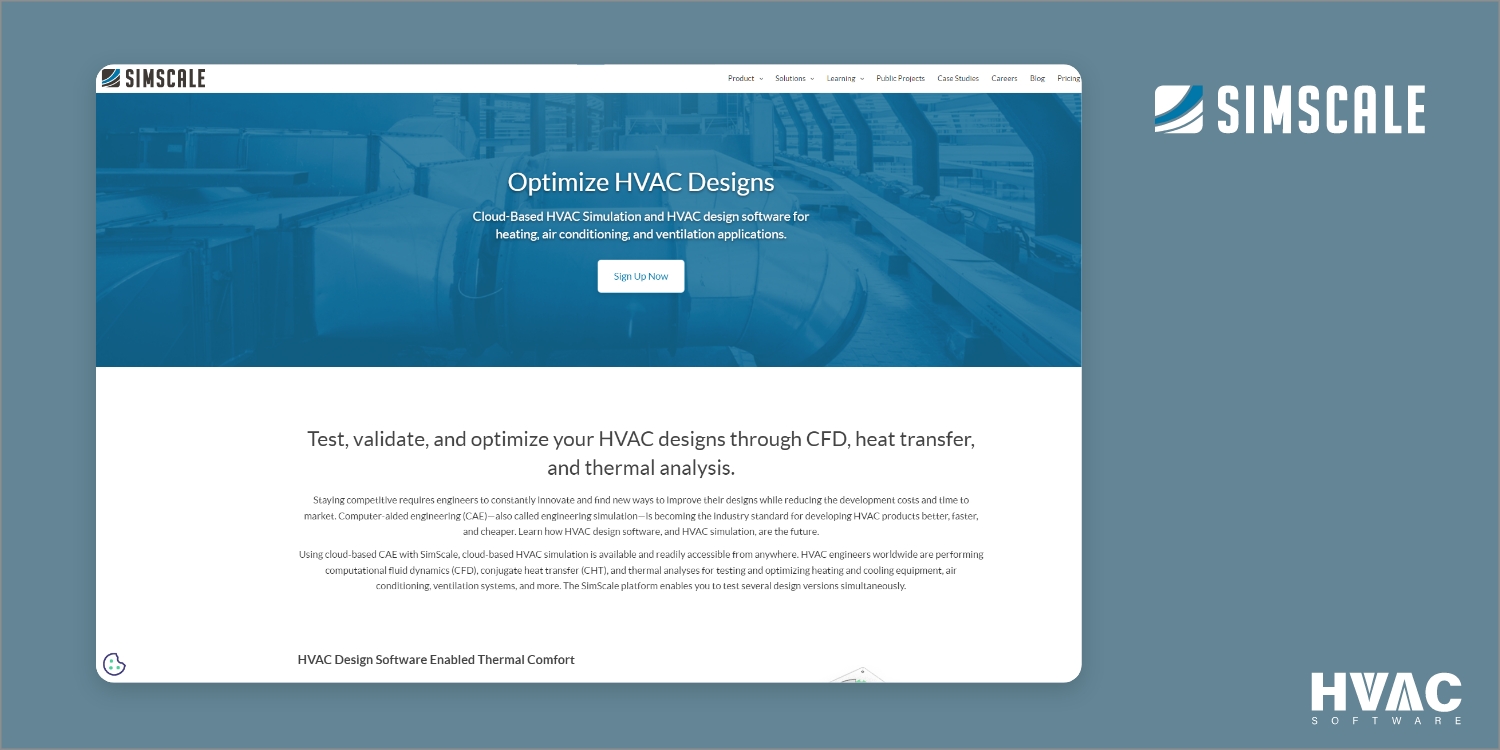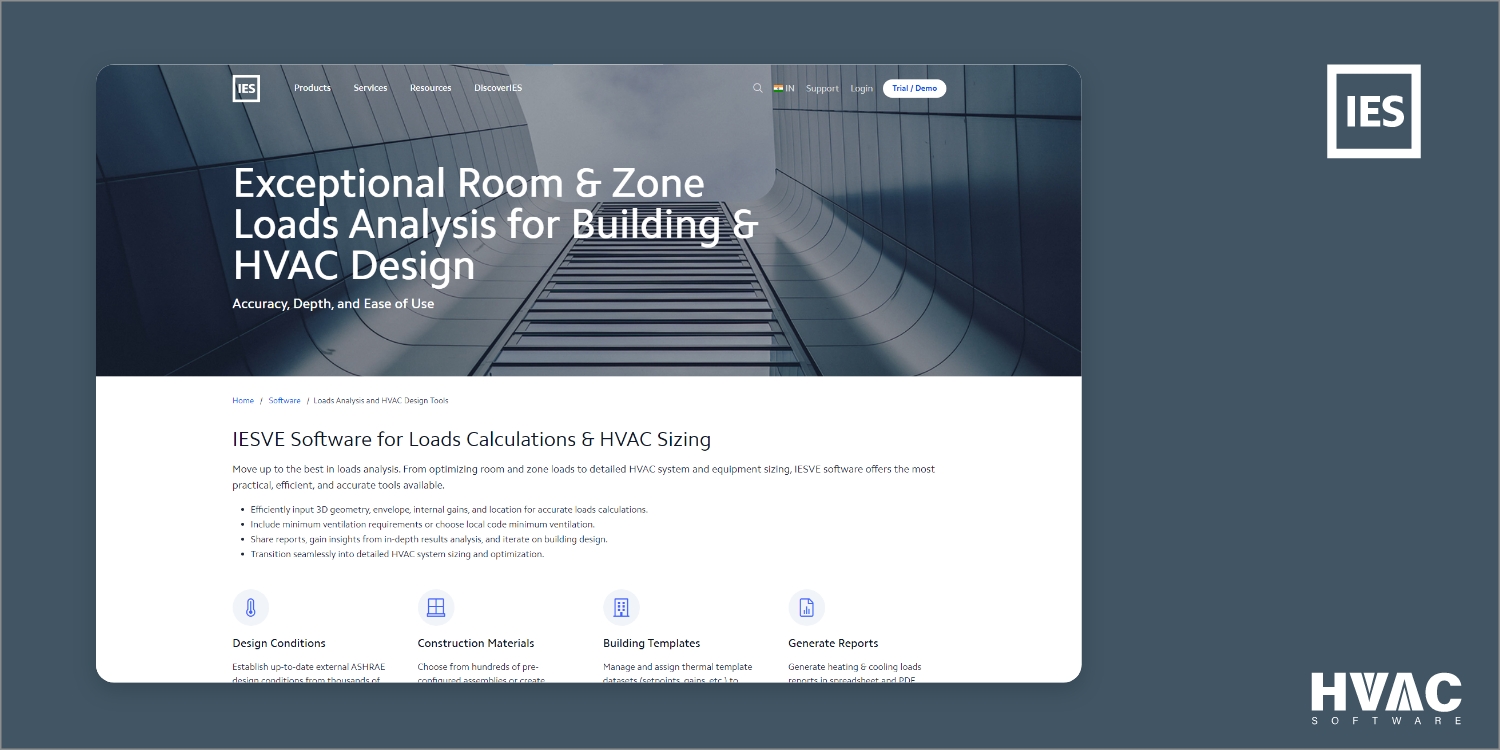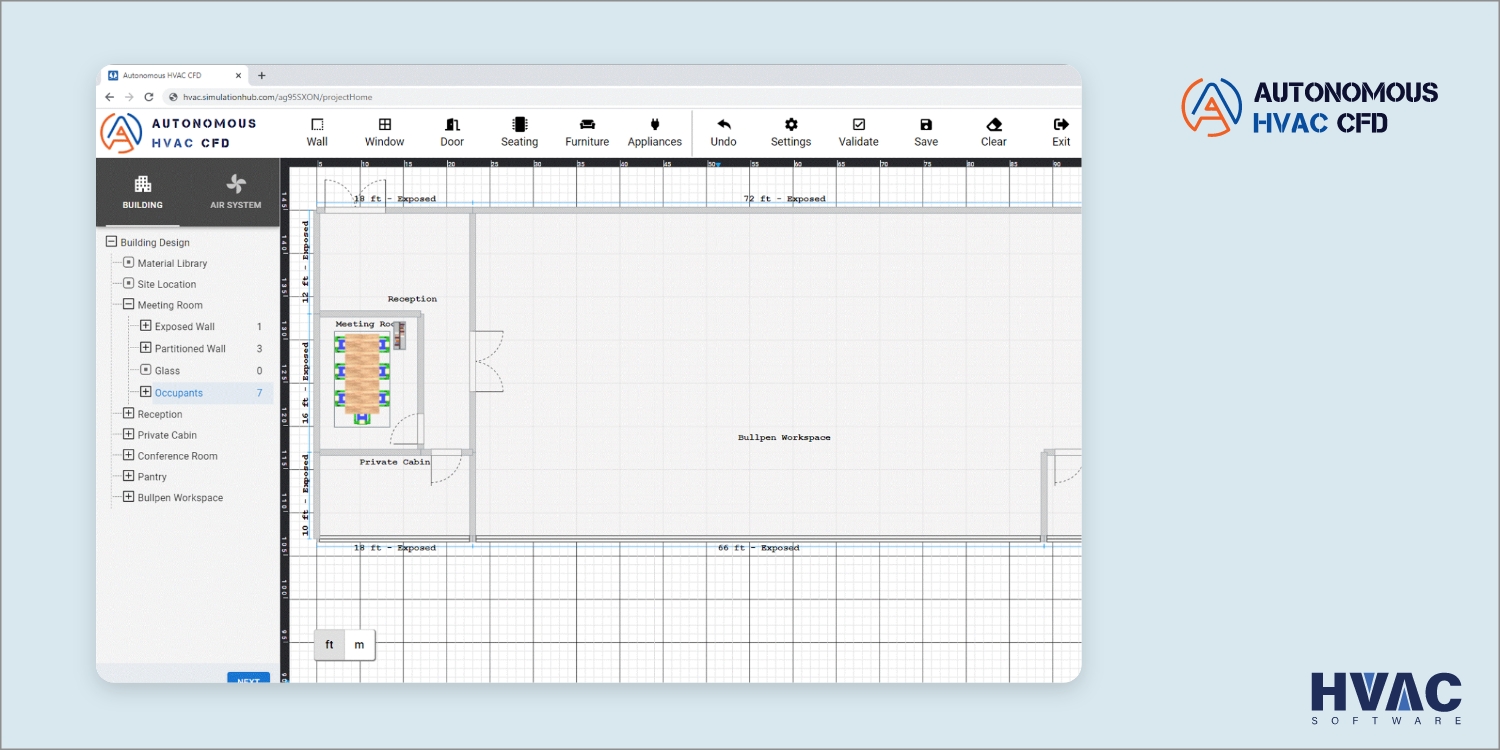A trial before purchasing anything gives the customer guarantee about the product and saves time. People try on clothes, home appliances, vehicles, and whatnot. However, it’s not the case with the HVAC system installed in a house. If it’s bad, the damage is done, and there is no way to change a building’s HVAC system, as changing the damaged part will cost heftily.
Here is when the HVAC simulation software comes to light. Like a car simulator or any virtual simulator, the HVAC training software helps HVAC engineers design an HVAC system or repair faulty equipment virtually. This technique is cost-effective and time-saving as well. If you are into the HVAC business for a long time, you should train your employees using HVAC simulation software for better service.
Meanwhile, if you are a trainee, you must use HVAC training simulation software, and you should know it well. You’ll get all the information you require regarding the HVAC training software in this article. So read it entirely and choose your ideal HVAC simulation software.
Contents
What is HVAC Simulation Software?
HVAC stands for heat, ventilation, and air conditioning, and the simulation software simulates how the heat, ventilation, and air conditioning will be in a specific area. This HVAC simulation software makes it easier for HVAC designers to know how the HVAC system will work, whether for a house, building, mall, or vehicle.
So, with HVAC simulation software, one can quickly predict the performance of rotating machinery like compressors, industrial fans, vents, pumps or blowers. Also, simulation software benefits energy efficiency, thermal comfort, and equipment optimization. A perfectly designed and installed HVAC system comes a long way.
Apart from this, the HVAC training software has made it easier to train new employees to fix faulty equipment with no real investment. So HVAC trainees can practice many times, like playing an interactive game where you are given a specific task with the required tools in a given location.
6 Best HVAC Simulation Software Solutions
1. SimScale

Engineering simulation has become the industry standard for developing HVAC products faster, better, and at a low cost.
SimScale founders had a crystal clear idea of simulation and wanted to create a platform to help every engineer access simulation. And that’s how SimScale, a robust HVAC simulation software came into existence.
Since SimScale software was introduced in 2011 when cloud computing was not mainstream, it holds the world’s first production-ready SaaS application name.
This software is an all-in-one simulation platform for CFD, FEA, and thermal analysis that are ideal for HVAC. Whether you want to evaluate airflow around a building or test the materials’ strength, we have you covered. So HVAC engineers can optimize their designs quickly and better with this HVAC training software.
Some of the notable features of this HVAC training simulation software are:
- CAD compatible: HVAC engineers can use any preferred CAD with this software.
- Parallel processing of multiple designs: Users can run multiple simulations in parallel without hassle.
- Access to simulation projects: Users can gain access to 300k simulation projects and use them as a template for their HVAC designing works.
- Validate your HVAC design on a laptop or desktop quickly and make iterations on the go.
- Easy-to-use interface: Software guides the users through step-by-step with its design validation process.
- Requires no manual updates: It automatically updates every time you refresh the page.
- Powerful security: Your data transferred within SimScale software is protected with industry-standard encryption technology. So no worrying about data theft.
2. Autodesk
A small mismatch in the HVAC systems can easily compromise the system’s longevity. This is why designing the HVAC systems and validating them using simulation software is vital.
HVAC system engineers looking for tools to simulate the efficiency of their building’s HVAC designs take a look at AutoDesk.
Autodesk is another reliable simulation software for your HVAC system designs. It creates computational fluid dynamics simulations that help analysts and engineers to predict how the liquids and gases will perform in an HVAC system.
So now, HVAC engineers can see the invisible properties of air moving around a building with this software and design perfect systems.
With Autodesk CFD software, you can,
- Schedule, manage, and simulate multiple design scenarios from a single dialog. This feature eliminates the need to activate and run each scenario separately.
- Launch from CAD: Users can send or import any CAD model to Autodesk, including third-party native CAD models.
- High-performance computing: Users can run simulations on multi-core computers and clusters of computers.
- Autodesk token cloud: This feature allows users to complete simulations without using local resources.
- HVAC designers can achieve operational goals by controlling microclimates, draft rating, thermal comfort, and air quality compliance.
3. Right-CAD
Wrightsoft has been on a mission to help HVAC business owners and contractors succeed since 1986.
Its computer automation of system design, sales, ordering, commissioning, managing, and selling in the HVAC business is made easy.
Its Right-CAD, a robust CAD software solution for HVAC design, is the first all-in-one 3D HVAC solution. It is powerfully integrated to sustain as a residential and commercial solution for HVAC design.
All the smart objects store all of the property information of each shape. So, this makes it easy to complete your calculations and designs. Thanks to its Hotlink Technology, when you make changes to your design, it automatically gets reflected in other components, including designs, sizing, and parts take-off lists.
Another interesting feature is this design software suits both mobile and desktop versions. So you can get a comprehensive start-to-finish HVAC tool for your HVAC business.
Other notable features include:
- You can integrate other WrightSoft modules and create quality designs. All the tools are sold separately.
- Its customizable workspace contains all essential user interface items for HVAC system design, calculations, and reports.
- HVAC shapes and objects: This software features easy-to-use HVAC shapes, making it easy for new and seasoned Wrightsoft users.
- It replaces manual data entry and tedious calculations with options to click and draw HVAC shapes from the drawing screen.
- Apart from importing Right-CAD and exporting it to RSU, this software reads and writes the dwg files in their native format without losing any data.
4. IESVE software

Accuracy, depth, and ease of use are the words that best suit IESVE simulation software. For the past 25 years, IESVE has consistently put effort into gaining a reputation as the leading global innovator and is excelling in the integrated performance-based analysis field.
Its unique software and technology are supported by expert consultancy, and users can rest assured with their analytical tools that stay innovative and advanced.
HVAC load calculations and design go hand-in-hand because both are important to simulate and design the ideal HVAC systems. The IESVE software is ideal for HVAC load calculations and sizing, which are the pillars of a perfect HVAC system.
Some notable features of HVAC simulation software are
- Design conditions: You can establish new ASHRAE design conditions from thousands of pre-defined locations.
- Construction materials: You can simulate multiple designs with various materials using its pre-configured assemblies or create custom designs.
- Quickly share reports, gain insights from in-depth analysis and improve your HVAC design.
- Transition seamlessly into detailed HVAC system sizing and optimization.
- Users can expect a detailed system and equipment sizing report with this software.
5. Azore
Azore is a Computation Fluid Dynamics software that analyzes fluid flow and heat transfer. It has designed a method to help engineers analyze a wide array of fluid thermal, mechanical, and chemical problems on a computer.
Different types of fluid dynamics situations can be simulated using Azore. Mainly, it helps visualize the flow of gases or air passing around a building or investigate the flow of heat transfer inside a duct system, room, or HVAC equipment.
So these features will be beneficial for HVAC engineers to design perfect HVAC systems for houses based on all kinds of metrics that help them work properly.
Azore CFD primarily provides various solutions for industries like transportation, HVAC, pollution control, and manufacturing.
In terms of the HVAC industry, HVAC engineers can simulate their HVAC designs for the following:
- Ductwork
- Data centers, battery storage
- Buildings, manufacturing plants
- Exhaust systems and ventilation
- Fan design and sizing
- Climate-controlled warehouses
Other notable features of this software are:
- Azore can operate parallelly on multiple cores of a single machine with its openMP. It has paired with Sabalcore to run Azore simulations on thousands of cores on the cloud hassle-free.
- Azore software has the potential to solve any incompressible, steady-state, or even transient fluid flow model. So HVAC engineers can simulate any design with any material.
6. Autonomous HVAC CFD

Autonomous HVAC CFD is a dedicated CFD software for indoor room thermal comfort modeling. Earlier, users had to know about CFD modeling, fluid properties, and mesh expertise for CFD analysis.
Now with AHC software, you need to enter only a few details like diffuser size and type, terminal unit details, and heat load/loss report to CFD simulation. ‘
This cloud-based CFD application for HVAC engineers consists of various features such as:
- You build a 3D model from 2D using the design automation feature without worrying about the performance metrics.
- This software combines multiple sets of solvers and code designed to solve the user inputs by receiving little insights from them.
- This software is ideal for the technical and visual experience needed to design an HVAC system.
- HVAC engineers can easily view the air movement behavior affecting room conditions via visual representation.
Frequently Asked Questions
What is HVAC simulation?
An HVAC simulation is a virtual simulation of how an HVAC system will work in real-time. This HVAC simulation helps trainees get practical knowledge of fixing and designing HVAC equipment without costing a penny. These HVAC simulations help a lot as they portray realistic equipment you will require during actual operations.
What is CFD in HVAC?
The CFD in HVAC stands for Computational Fluid Dynamics. It is a branch of fluid mechanics that uses the laws of physics and mathematics to determine the flow of a fluid. The fluid can be gas or a liquid; CDF approximately calculates how these fluids will flow in between objects in their way.
Can HVAC be automated?
Automated HVAC controls in buildings are already a trend. These automated HVAC controls can save time and energy as a person can remotely control the building’s temperature, ventilation, and air conditioning within less time.
What is essential when designing an HVAC system?
While designing an HVAC system, it’s important to consider the size of equipment you will be using, the area’s ventilation, and design protocols that have been used for ages. Lastly, you need to follow a code in the area. Otherwise, your customer might get fined.
What are the factors to consider when designing air conditioning systems?
Some essential factors to check while air conditioning design process are:
- The type of air conditioning system
- The system size and the available space
- Cooling loads
- Cost-effectiveness
- Ducts and ventilation
- Energy efficiency
- Health and safety requirements
Conclusion
Similar to many other simulations, the HVAC simulation software is highly important. A trainee directly practicing on a working HVAC system or equipment will largely lead to damage. And as we all know how expensive they are, it’s better to work on HVAC training simulation software first.
You can easily find an online HVAC simulator that you can use for training. However, most of them are paid, which makes sense; at least you won’t injure yourself while working. After reading this article, you will be able to choose the best HVAC software for your HVAC business without hassle. We hope that you will find everything regarding.

